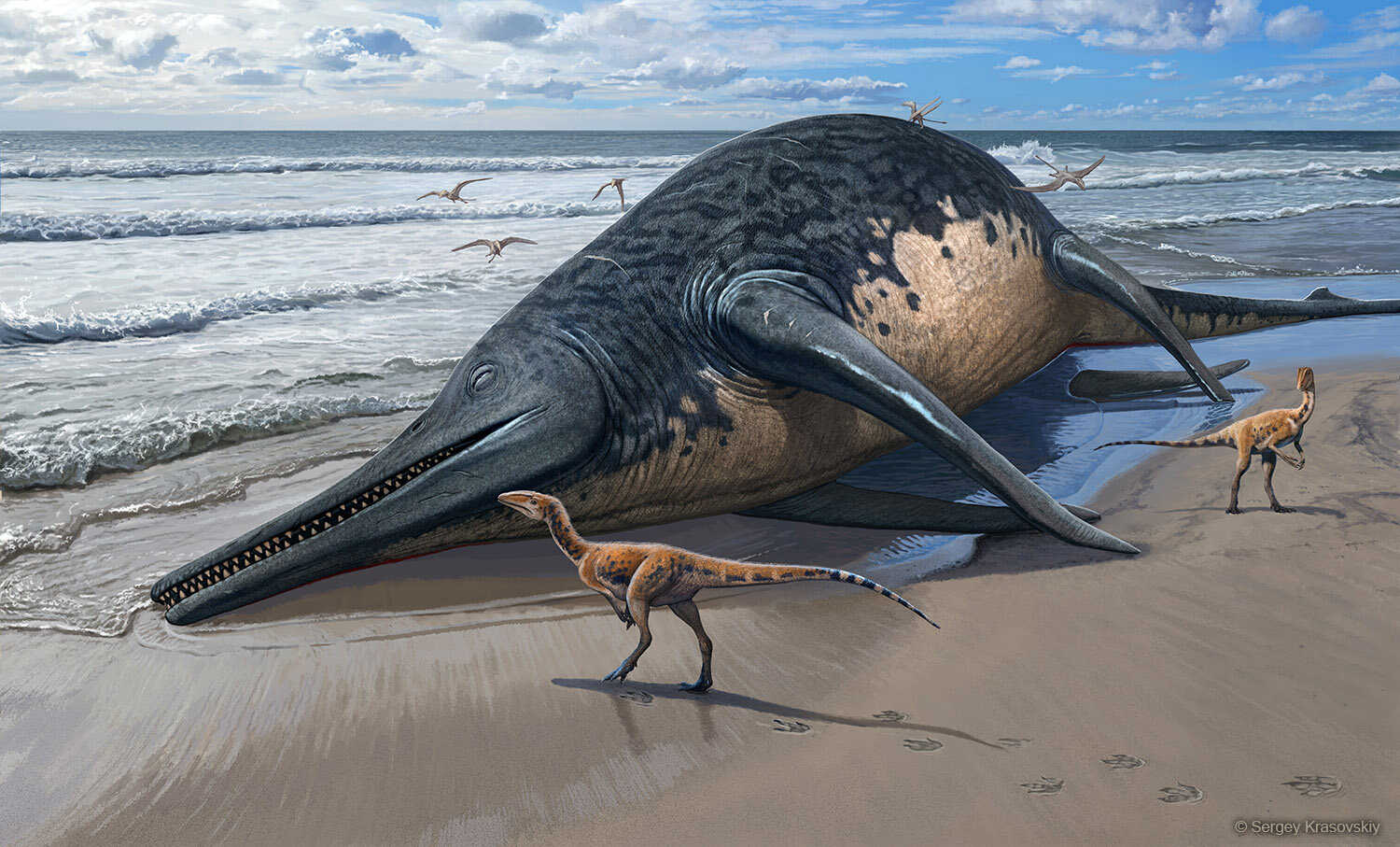The discovery of a colossal jawbone on a Somerset beach has unveiled the existence of a new species of massive ichthyosaur, shedding light on the ancient marine realm like never before. The jawbone, exceeding two meters in length and believed to have been part of a 25-meter-long oceanic titan, marks a significant breakthrough in paleontology.
The journey of this discovery began with Justin and Ruby Reynolds, an adventurous father-daughter duo from Braunton, Devon. Their fossil-hunting escapade in May 2020 along the Blue Anchor beach in Somerset led to the unearthing of the first fragments of this enormous jawbone. Ruby, then just 11 years old, stumbled upon the initial piece, sparking a collaborative effort to uncover more of this prehistoric puzzle.
Recognizing the magnitude of their find, the Reynolds family reached out to Dr. Dean Lomax, an esteemed ichthyosaur expert and paleontologist at The University of Manchester. Dr. Lomax, in collaboration with Paul de la Salle, an experienced fossil collector who had discovered a similar giant jawbone in 2016, embarked on a journey to piece together this ancient mystery.
The excitement and astonishment surrounding the discovery were palpable. Dr. Lomax expressed his amazement at the find, noting the improved preservation and completeness of this second jawbone, which he described as having a unique shape and structure. The subsequent excavation efforts, involving the Reynolds family, Paul, Dr. Lomax, and a dedicated team, yielded additional pieces that seamlessly fit together, forming a multimillion-year-old jigsaw of scientific significance.
Justin Reynolds, reflecting on the discovery, shared his thrill at finding a defining part of Paul’s earlier find, further cementing the importance of their contribution to paleontology. The final piece of the puzzle was recovered in October 2022, completing the jawbone and setting the stage for a groundbreaking scientific revelation.
The research team, under Dr. Lomax’s leadership, meticulously analyzed the jawbones and identified them as belonging to a new genus and species of giant ichthyosaur—Ichthyotitan severnensis. The name pays homage to the creature’s colossal size and the location of its discovery along the River Severn. These bones, estimated to be around 202 million years old from the late Triassic Period, provide a glimpse into a bygone era when these oceanic titans roamed the seas alongside terrestrial dinosaurs.
The significance of Ichthyotitan severnensis extends beyond its sheer size. It represents the final chapter of a lineage of giant ichthyosaurs, as evidenced by the Late Triassic global mass extinction event documented in the surrounding rock layers. This extinction marked the end of an era for these magnificent creatures, making these jawbones a poignant relic of a lost world.
While Ichthyotitan is not the first giant ichthyosaur discovered, the uniqueness of the Reynolds’ and de la Salles’ findings lies in their timing and distinctive features. These bones, emerging approximately 13 million years after their closest geological relatives, offer invaluable insights into the evolutionary timeline and ecological dynamics of these ancient marine reptiles.

The collaborative nature of this discovery, involving amateur fossil enthusiasts like Ruby and Justin alongside seasoned experts, underscores the inclusive and dynamic nature of scientific exploration. Dr. Lomax praised Ruby for her keen observation and contribution to the scientific process, highlighting her as a budding scientist with a promising future in paleontology.
Ruby herself expressed pride and excitement in being part of such a significant scientific discovery, embodying the spirit of curiosity and exploration that drives paleontology forward. The involvement of master’s student Marcello Perillo from the University of Bonn further enriched the research, unraveling the bone’s internal structures and shedding light on the animal’s growth patterns.
Paul de la Salle, whose initial discovery sparked this remarkable journey, shared his joy at witnessing the culmination of years of research and collaboration. The publication of this groundbreaking research in the open-access journal PLOS ONE marks a milestone in paleontological history, ensuring that these discoveries are accessible to the global scientific community and the public.
The unveiling of Ruby, Justin, and Paul’s discoveries at the Bristol Museum and Art Gallery will provide a tangible link to the ancient past, inspiring future generations of scientists and fossil enthusiasts. Dr. Lomax remains hopeful that further discoveries await, tantalizingly suggesting the possibility of finding complete skulls or skeletons of these gigantic ichthyosaurs in the future.
Source: University of Manchester
